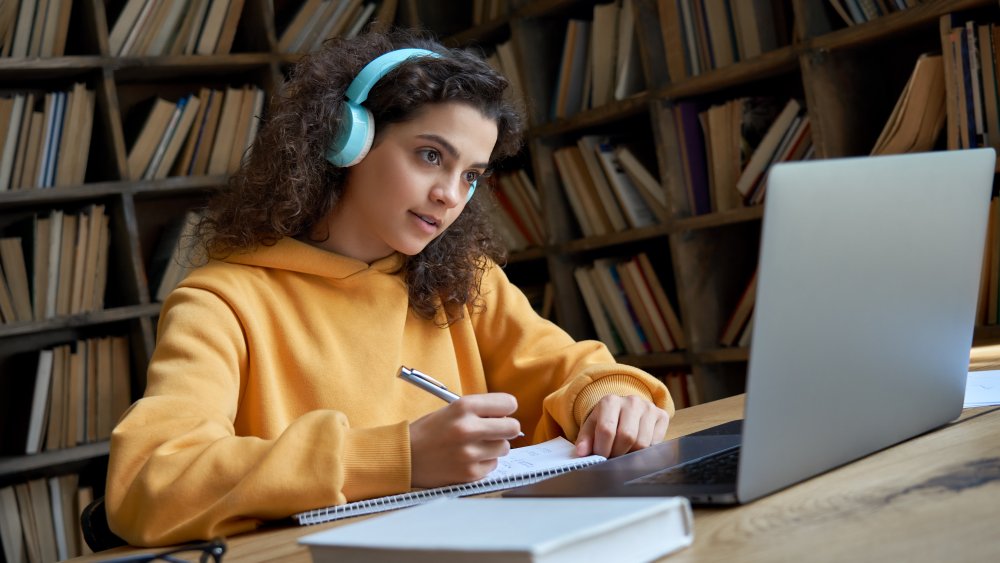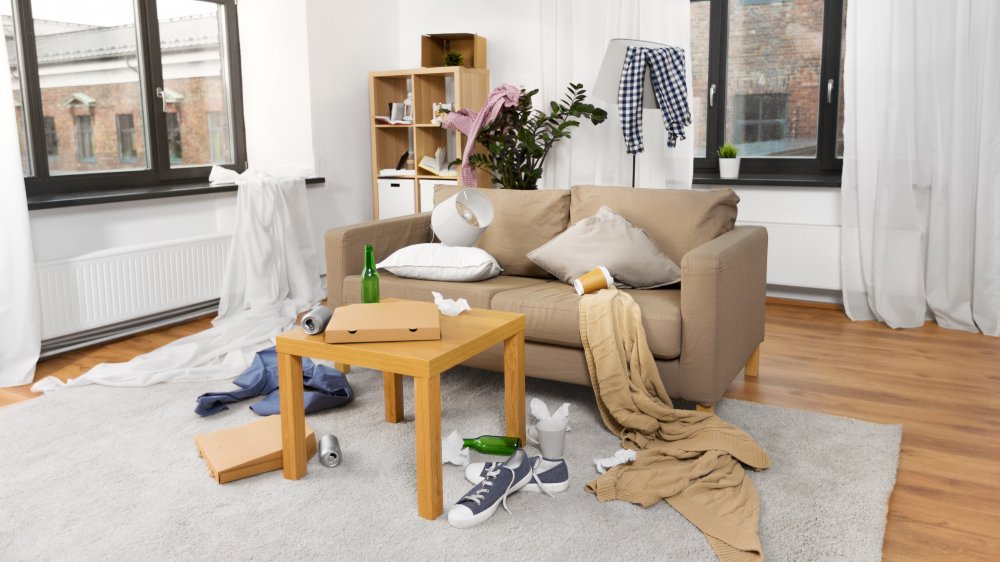There Are Mental Health Benefits To Kids Keeping Cameras Off In Zoom Classes
Back to school, this year, was an easier trip for some kids, since all they had to do was shuffle a few steps to the dining room table or perhaps the living room couch. As classes resume via Zoom, there are numerous benefits — the first and most obvious being reduced risk of infection (even of colds and flu). There's also no yucky cafeteria food, no playground fights, and a little more sleep for everyone since no need to get up at dark-thirty to stand at a freezing cold bus stop.
There are, however, certain concerns students from kindergarten to college are now having to deal with that may impact their mental health. We're not talking about lack of socialization (a lot of kids — and adults — after all, already do much of their socializing online via Snapchat, TikTok, etc.), but rather, the lack of privacy and other issues that come when suddenly the whole class is invited right into your home via videocam.
If school rules permit, you may want to consider keeping those cameras off during school time. Here's why.
Cameras cause stress and fatigue
Zoom fatigue is something many of us have become familiar with over the past few months — that sense of being just completely stressed and wiped out after spending a few hours on-camera — which can have negative health effects in the form of concentration problems and, though they are tired, trouble sleeping. BBC Worklife spoke with Marissa Shuffler, a Clemson University associate professor whose field of study is workplace wellbeing and teamwork effectiveness, and she had some ideas about just what's causing this phenomenon.
She points out that being on-camera makes us hyper-aware of the fact that we are being watched, saying: "When you're on a video conference, you know everybody's looking at you; you are on stage, so there comes the social pressure and feeling like you need to perform. Being performative is nerve-wracking and more stressful." Shuffler also notes that it's hard for anyone on-cam to stop staring at their own face, so it's almost like being in class and in front of the bathroom mirror at the same time.
Cameras lead to privacy concerns
Another cause for concern with keeping the camera on during class time (or any time, really) has to do with privacy — or lack thereof. As Wayne State University M.D./Ph.D. candidate Tabitha Moses writes in The Conversation, "At school, students are not required to disclose details about their personal lives to their peers, but some of this privacy is lost in video-based classrooms. To turn on video means allowing others into their home." While this may be just weird and uncomfortable for some kids, for others it can pose a serious danger: children who may be living with moms who are trying to stay off the radar of an abusive partner, for example, or kids who may have undocumented family members and don't want this to come to the attention of the immigration authorities.
Also, while online classes are supposed to be held on secure platforms, this isn't always the case. Forbes speaks of a phenomenon called Zoombombing, where uninvited participants can hack into video chats. Not only are the Zoombombers able to see and hear what were meant to be private meetings, but they've been known to act in very disruptive ways, and some even share pornographic images. For older kids, this is bound to get them off-track in a big way, but for younger ones... well, that's the kind of learning experience no parent or teacher ever wants to have to explain.
Cameras expose economic disparities
While one of the reasons often given for having kids wear school uniforms is to hide any "wealth gap," having online classes with the camera on blows this all to heck. Whether or not the school system has an on-camera dress code, the fact is, video shows not only what you're wearing, but also the kind of household in which you live and your life circumstances in general. It's pretty easy to tell which households are more privileged (dedicated desks or workspaces, one computer per child) and which ones are not (having to work in a crowded, noisy space with shared equipment). Not to mention, 1.5 million students are attending school while homeless, and may not want their classmates to see they're in a shelter or public library — should those places even the permit day-long computer access necessary for online learning.
Plus, as Moses observes in her piece for The Conversation, not all households at the lower end of the economic spectrum even have access to the necessary tools and technologies to make an on-camera appearance possible. Even if the school system supplies a tablet or computer equipped with a webcam, the students' homes may lack internet access, or the access they do have may not offer sufficient bandwidth for sustained video streaming. In order to keep things fair, keep things safe, and keep students focused, allowing or even insisting on having cameras off during classes may be the best policy for online learning.




